What to do in four days in Valle D’Aosta?
With cities full of charm, beauty and abundant nature, the Valle D’Aosta region, in northwestern Italy, is one of the most beautiful in the entire territory. Bordering France and Switzerland, it is a destination for all types of audiences. Today I bring you a brief itinerary of what to do in the region in four days. Let’s see what to do in four days in Valle D’Aosta? Here at Your Travel to Italy with Ana Patricia you make the trip of your dreams !!! ALSO: see our “Accommodation in Italy – Tips for your holidays!”.
Our Introduction
Today we are going to talk about the smallest Italian region, but also one of the most beautiful: Valle D’Aosta. The region is the smallest Italian region, both in surface area and in population: it has only 74 communities in an area of 3,263 km² and has about 124,000 inhabitants. It is a completely mountainous area and, to the north, it borders with Switzerland, to the west it ‘meets’ with France and to the south and east it ‘joins’ Piedmont. It is a region that can be visited at any time of the year and, rest assured, it is ideal for those who want to escape the large tourist crowd, have contact with nature and live moments of peace and tranquility. Shall we start our journey? Find out everything about Valle D’Aosta here!
IMPORTANT TIPS!
If you are traveling during the winter, make sure that you have snow chains in the trunk when you rent a car. I invite you to read this post: DRIVING IN THE SNOW. Another important point for those traveling in the region during the winter: if there are weather alerts, do not venture out, especially on the road. Wait for new authorization from the civil defense to return to circulation; Check out our Driving in Italy section!
If you are on a ski slope and the monitors issue a weather alert, asking you to evacuate the area: leave immediately! And remember NOT to SKI off the slopes, O.K.?! Never! Under no circumstances! Find out where to ski in Vall D Aosta here!
1) What to do in four days in Valle D’Aosta? FIRST DAY
Wake up early, get ready and start the adventure! Today we will dedicate our day to the most beautiful castles in the region. Our first stop is Castel Savoia, in the town of Gressoney-Saint-Jean. This is the furthest attraction of all the others and ends up being ‘out of the way’, so we’ve put it on for the first day so you can get on your way without ‘going off course’ later.
Visit Gressoney-Saint-Jean Castle
The castle was built at the request of Queen Margherita of Savoy, who since 1889 has frequented Gressoney as a guest of the barons Beck Peccoz. The Castle of Savoia is very beautiful and is located at the foot of the Colle della Ranzola. There you will find a magnificent belvedere that dominates the entire place. The residence housed the Queen until 1925, a year before her death; the castle was purchased after the queen’s death by the Milanese industrialist Moretti in 1936, and in 1981 the castle became the property of the Aosta Valley Autonomous Region.
A little more about Gressoney-Saint-Jean Castle
The building has an almost rectangular central shape, and is flanked by five spitting towers, one different from the other; the architect Emilio Stramucci was responsible for the project, who also created the neo-baroque decorations for the Royal Palace in Turin and the Quirinale Palace in Rome. The Castle of Savoia has a medieval style, and its exterior is clad in gray ashlar stone. Inside, the ceilings are coffered, and the furniture is of medieval inspiration, all the work of the Turin-based carver Michele Dellera, a supplier to the Casa Real.
The castle is divided into three floors, the ground floor with living rooms; the noble floor, with the royal apartments and on the second floor (not open to visitors), and which was reserved for the lords of the court. The furniture seen there is authentic, as are the tapestries that decorate the walls: beautiful, made of linen and silk fabric, decorated with a chine effect. The ticket costs 5 euros and you can buy it online. Pay attention to the hours, as they change according to the seasons.
Visit Issogne Castle
Now we head to Issogne Castle, about an hour’s drive away. This is another famous and characteristic castle in the region! It was actually two separate buildings and then they were expanded and joined. But between 1490 and 1510, at the hands of Giorgio di Challant, who was prior of Sant’Orso, the site was radically transformed and became a castle. Giorgio made it a majestic residence for his cousin, Margherita de La Chambre. The image we see today is of this renovation: a beautiful building, in the shape of a horseshoe, with a stunning view of a large patio and its Italian garden. There we can see several paintings of important characters and heroes of the Italian history; the ground floor portico was decorated with a series of spyglasses and frescoes depicting scenes from everyday life, and also from the courtyard stands the famous wrought-iron fountain del Melograno, symbol of prosperity.
A little more about Issogne Castle
After its heyday, in the 16th century, the residence was abandoned and in 1872 it was purchased by the painter Vittorio Avondo. He carefully restored the site and donated it to the State in 1907. Today the property is in the Aosta Valley Autonomous Region and still presents us with some elements of the original furniture that, together with numerous domestic objects, present us with the final scene of the 15th century. The place has three floors and is beautiful!
Visit the Castle of Verres
To close the day, we will go to another jewel of the region: the Castle of Verrès, which is very close to the Castle of Issogne. The Château de Verrès was built on top of a rocky peak that dominates the village. The first records of this castle appear in 1287 and it is listed as the property of the lords of De Verretio. Ibleto di Challant, a member of one of the main noble families in the Aosta Valley, who brought the place to its current form.
A little more about the Château de Verrès
The castle, unlike other castles in the region, is made up of several buildings that ‘stop’ on a wall and remind us of a block, with about thirty meters on each side. It looks a lot like a military fort, although inside it is delicate and elegant, thanks to the staircase in the courtyard, the decoration of the windows, the doors and the shelves of the monumental fireplaces. It is, in fact, very beautiful! In the middle of the 16th century, after the extinction of the family, the castle began to decline and was abandoned for more than three centuries. At the end of the 19th century, the site was restored and today it is one of the most visited attractions in the entire Valle D’Aosta region. The ticket costs 3 euros. After a day of living like kings and queens, there’s nothing better than a nice rest!
GOLD TIP:
- The region has several castles! If you want access to the complete list, you can visit the Aosta Tourist Guides website!
First day Map
![]()
2) What to do in four days in Valle D’Aosta? SECOND DAY
Today we will go to the splendid Lake Blu. Lago Azul is located at the foot of Monte Rosa and is one of the most popular destinations at the top of Val d’Ayas.
Visit Val d’Ayas
First of all, we need to talk a little about this magnificent city: Val d’Ayas. The municipality of Ayas is at the head of the valley touched by the Evancon stream and dominated by Monte Rosa and its peaks. The landscape here is very varied and presents us with glaciers and hard rocks that mix with meadows and gently sloping pastures. The city is ‘divided’ into numerous small villages and each of them presents us with its own landscapes and several different architectural features. The most famous place here is Champoluc, at 1568 meters of altitude, and with only 1380 inhabitants, it welcomes its tourists with affection and attention, but we leave for the Lake from Saint Jacques, at an altitude of 1689 meters.
Visit Fienry
We climb 550 meters, but calmly on a very gentle slope. The walk lasts about 2 hours and the surroundings of the place do not let us notice how much time has passed. A strategic stop at Fienry is welcome, and Fienry is one of the oldest villages in the Val d’Ayas. From here, turn right until you reach Pian di Verra Inferiore. We can already see the splendid Monte Rosa and, from here to the lake, it is enough to cross the plateau. After passing the plateau, after half an hour of ascent that can be a little ‘boring’, the effort is worth it: we finally find it, our imposing, seductive and with a mesmerizing turquoise color, Lake Blu. The lake forms a crystalline water mirror where Monte Cervino, the third highest peak in Italy, with 4478 meters of altitude, reflects in a poetic way.
TIP:
- From here, several trails depart for those who want to explore more and better this region. Both in summer and winter, it is possible to walk the paths safely and there are levels of difficulty for all adventurers. If you are going in winter, wear appropriate snow shoes, as at some points along the way it may be necessary.
Important:
- NEVER leave the marked trail! Always follow the directions there. Another thing: follow your rhythm! No need to hurry! If you are traveling during the summer, use sunscreen and light clothing; in winter, wear clothes that keep you warm, and, as we have already mentioned, appropriate shoes, as it is quite cold in that area. Remember to stay hydrated at all times of the year. Find out all about the weather in Italy here!
Visit Chamois
After visiting Lake Blu, you can visit the charming town of Chamois. Located at an altitude of 1815 meters, it is the highest municipality in the Aosta Valley. You can only get here on foot or by cable car, as motor vehicle traffic is prohibited in the inhabited center. Tickets cost 5 euros per person. The city is one of the “pearls of the Alps”, a title that rewards mountain towns that care about environmental sustainability and hospitality towards their visitors. There you cannot miss visiting the city center, which is impressively elegant. After spending unique moments: it’s worth a rest!
Second day Map
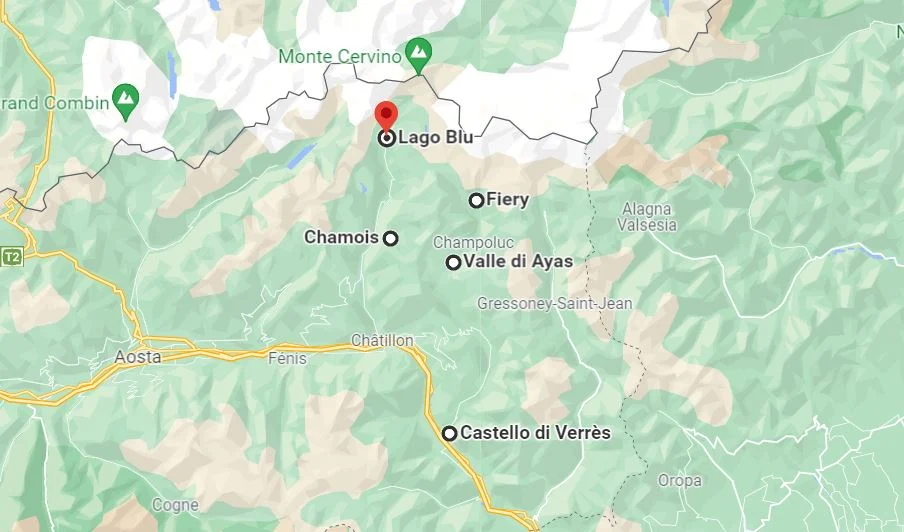
3) What to do in four days in Valle D’Aosta? THIRD DAY
It’s impossible to be in the Valle D’Aosta region and not visit, of course, Aosta! The city is a delight and, without a doubt, deserves a leisurely visit, although it is possible to discover it in a day. Let’s get to know the attractions of Aosta. How about a guided food tour in Aosta? Click here to learn more!
Visit the Arch of Augustus and Porta Praetoria
In the city, we can already see the beautiful Arch of Augustus. The arch was built to celebrate the figure of Emperor Augustus and was dedicated to the victory of the Romans over the population of the slabs that lived in the area. It’s beautiful. Walking through the city, we find three entrances and two side walls, it is the Porta Praetoria. Monumental, the door is made of slabs rich in Bardle and Carrara marble. In medieval times, this gate was occupied by a noble family who lived in the defensive tower placed on the north side and which today houses the tourist information office. The architecture is amazing!
Visit the Roman Theater
From there we head to the historic center, which is also a charm! Without a doubt, a must see there is the Roman Theater. Its vestiges only prove the grandeur of the structure and the monument still survives in a beautiful way: it is 60 meters long and 22 meters high. Walking around, we can understand the structure of the building that is presented on three levels, being the spaces for the orchestra, the proscenium and the service rooms.
TIP:
- Nearby, during Christmas and New Year, the famous End of Year markets take place. Food, drink and handicrafts are presented in an almost irresistible way to visitors at the various stalls set up there. It is VERY worth it!
Visit the Cathedral of Santa Maria Assunta
It is impossible not to mention the Cathedral of Santa Maria Assunta. Built on the site where the Domus Ecclesiae already stood in the 9th century. The current church is like this today because Bishop Anselmo requested an impressive cult building that could host religious services. The exterior of the cathedral is characterized by the beautiful Renaissance facade that features frescoes and terracotta statues, which narrate the story of the Virgin Mary. Inside the church, the two mosaics of the choir floor and the beautiful colored glass windows at the back are notable. Be sure to also visit the Ottonian frescoes, located in the attic: they are impressive.
Visit Piazza Chanoux and Caffé Nazionale
To end the day, take a leisurely walk through the city and watch the world go by. An excellent location for this is the splendid Piazza Chanoux. The downtown streets still show us the orthogonal structure of the ancient Roman city and, today, the streets are commercial, full of restaurants, bars and shops. The Town Hall Arcade, which dominates the landscape, houses two neoclassical statues that symbolize the two main waterways in Aosta: the Dora Baltea and the Buthier stream. Be sure to have a coffee at the historic Caffé Nazionale: a delicious experience. After a peaceful day in one of the most beautiful cities in Italy, a nice rest is more than welcome!
4) What to do in four days in Valle D’Aosta? FOURTH DAY
Let’s go to one of the most VIP places in the entire Valle D’Aosta! Let’s go to the wonderful Courmayeur. At an altitude of 1200 m, Courmayeur is one of the most incredible places in all of Italy. In the city center, crossed by Via Roma, there are several shops, boutiques and cafes, where you can enjoy the charm of this small town. Walking through the center, you can admire the beautiful Church of San Pantaleone, whose current appearance dates back to 1722, although the first mention of this place was in the 13th century. In the square in front of the church, you can see a statue of Abbé Henry, a great figure of a Valdostano scholar-priest; the work is by the sculptor Nicoletta (1966). Abbé Henry was the creator of the nearby botanical garden; the site is home to 250 plant varieties and most of them were collected in Abbé‘s trips around the world; 150 of these flowers are exotic. In Piazza Petigax, we can see a century tower; in the 15th century, the tower became the property of the Avise family, who owned the site until the 18th century and later donated it to the comune. Today the place is an exhibition center.
A MUST SEE is the Monte Bianco Skyway
The climb from Punta Helbronner (with its 3466 meters high) through the Monte Bianco Skyway is divine! The rotating cable car is very futuristic and a unique experience, where in just a few minutes you reach the panoramic top of Punta Helbronner to enjoy a magnificent view of the Alps chain. Ah, stop by the Pavillon du Mont Fréty and visit its botanical garden, in Saussurea, which is the highest in Europe and offers us an incredible collection of 900 alpine plants belonging to mountain ranges around the world.
Third and Fourth day Map
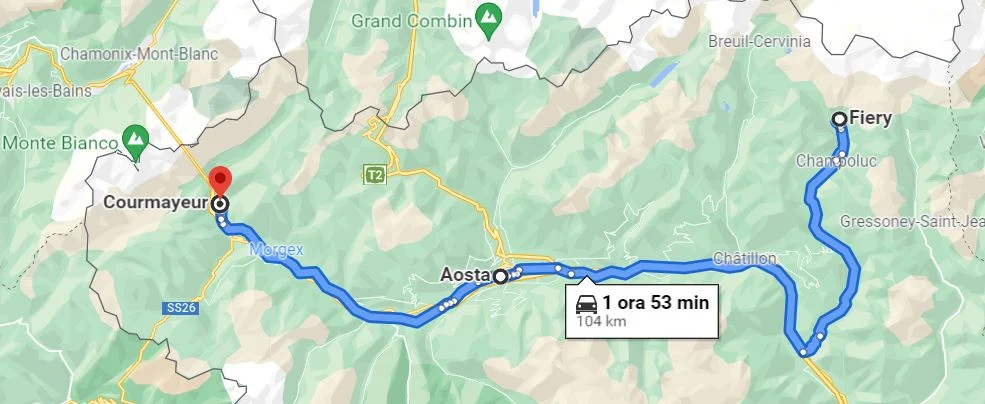
Good to know…
- Of course, making a four-day itinerary in this incredible region is even ‘unfair’, as many incredible attractions are left out, however, with four days at your disposal, you can already have an idea of what this magical region has to offer you. . Want a detailed roadmap? Want to know more about Valle D’Aosta? Talk to me! How about we set up an amazing trip through this region full of charms?
Watch this video and know more about Italy!!
Subscribe to our channel and receive more videos with information and tips about Italy. Don’t forget to leave that Like;)
Conclusion
What to do in four days in Valle D’Aosta? In four days in Valle d’Aosta it is possible to see some of the most interesting points of the region, but if you want to know more, and better, dedicate at least 10 days to this beautiful region that, for sure, will impress you in every way.
Are you insecure?
And if you feel insecure, have no time, and need help to organize your trip, don’t hesitate to contact me! I will love to help you make your dream trip to Italy come true. And how can I do that? Keep reading this post until the end and you will understand how we make your life and your trip much easier.
Did my post help you? If so, be sure to post your comment below, but if you still have questions just send me a message I will answer you as soon as possible!
An Extra Help for your Trip The best content from Your Travel to Italy! Learn more about our tours in Italy right now! Best regards from Italy

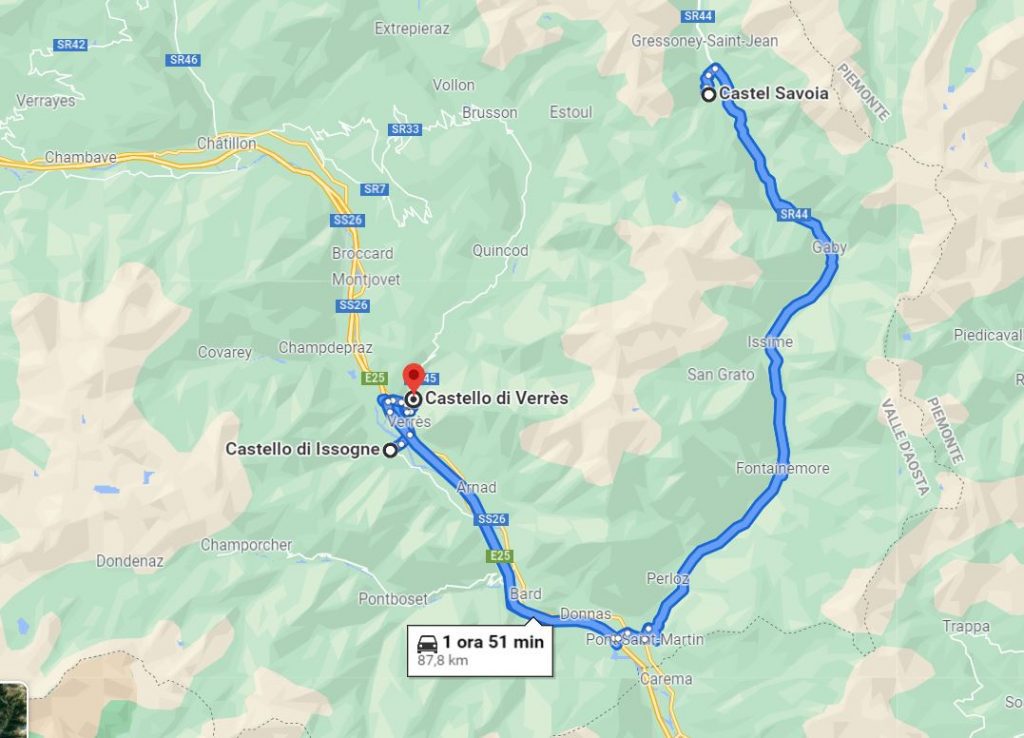
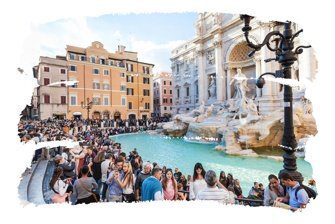

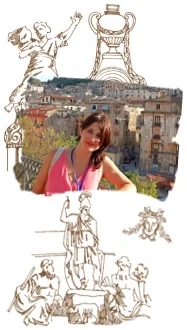

 Save money!
Save money!